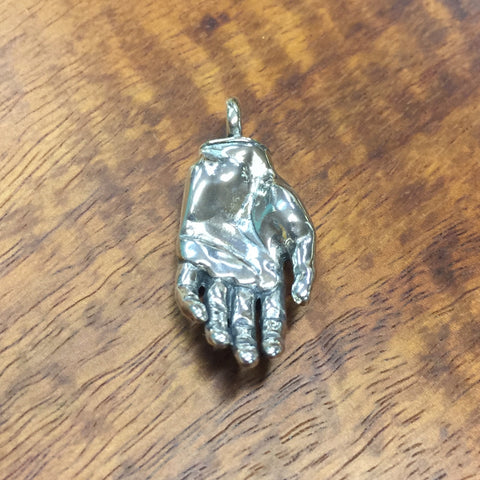
That Jewelry You’re Wearing is Crafted Out of Stardust!
Introduction:
Silver is a remarkable metal. If you’ve ever worked with it (hammered it, cast it, polished it, etc.) or even worn it, you know exactly what I’m referring to. It can be polished to reflect more light from the visible spectrum than any other metal, making it ideal for use in mirror production. It rings pleasantly when worked on an anvil and can be easily formed into objects of extraordinary beauty. It even finds its way into electronics as pure silver conducts both electricity and heat extremely well! In medieval times, it formed the basis for England’s currency and the sterling pound was deemed the most reliable coin in Europe. Its origins might surprise and awe you and after reading this article you will no doubt find yourself gazing at your silver items with new found respect!
The Not So Humble Origins of Silver:
Those earrings you always wear because they match everything, that pendant you cherish because it belonged to your grandmother or that engagement ring that brings a smile to your face every time you look at it, all have an incredible origin story! While lighter elements such as helium, hydrogen and lithium all came into being shortly after the big bang, heavy elements such as silver were created in the interiors of new stars or when those stars went supernova, scattering their precious contents throughout the universe. [Heidelberg University]

To think that you’re wearing something that flashed into existence as a massive star exploded is mind blowing! The supernova of specific stars generate enough pressure to create a fusion reaction powerful enough to create silver! This revelation might not increase the monetary value of the jewelry you’re wearing, but it will certainly make you think about the fantastic origins of the material! Our sterling silver sun pendants take on new significance when examined in that context! A sterling silver sun, made out of stardust! While the material’s origin story is certainly incredible, it’s history on earth is also a worthwhile read.
Coin Clipping and the Royal Mint:
Anyone that has read my other blog articles knows that I can’t resist injecting a little history into my writing. As such, I had to write about silver’s important role in the currency of medieval England. “The pound is 1200 years old, born about 775AD when “sterlings” or silver pennies were the main currency of the Anglo-Saxon kingdoms.” [Dawney P1] If you owned 240 silver pennies you owned a pound of silver. The sterling pound was highly regarded throughout all of medieval Europe and the English crown worked diligently to keep it that way. For the offense of creating sub-standard coins, in 1124 Henry I had 94 mint workers brutally castrated. [Dawney P7] In order to preserve the value of the English Sterling Pound, in 1279 Edward I moved the minting operation into the Tower of London where the comings and goings of the staff could be strictly regulated.

Coins were minted by placing a specific weight of silver between two dies held by one minter. A second minter would then strike the top die with a hammer which shaped the coin. Counterfeiting and coin clipping were insidious crimes that eroded confidence in the pound sterling. So much so, that the first offence was punishable by the removal of a hand and the second offence punished by castration. Later, either crime became a treasonable offence and was punishable by hanging, drawing and quartering. [Historic Royal Palaces]
It Even Has Medical Applications?!?!
Among silver’s many aesthetic and monetary applications, it also has a historic and emerging role in medicine! Scientists have discovered that silver ions are antimicrobial and can be applied to the human body to fight infections since it is far more toxic to bacteria than it is to humans. [Pappas] Silver’s role in keeping bacteria at bay was known, even before the nature of infections were known. According to Herodotus, the King of Persia carried to war with him boiled water stored in silver flagons. [Clement and Jarrett P4] The implication being that water sanitized through boiling, stayed clean because of the silver. The most frequent modern use of silver is in its application to burn victims. Silver Nitrate applied to the wound effectively reduced instances of infection by the bacteria Psuedomonas aeruginosa. [Clement and Jarrett P10] I have but scratched the surface of medical applications for silver and there will undoubtedly be further discoveries in the not so distant future!
Conclusion:
I could write a book about the usefulness of silver to mankind. It’s applications range from the purely aesthetic, to medicine and technology. The English Monarchy based their currency on silver until the gold standard supplanted it in 1717. As a jeweler, I have the pleasure of working with it on a daily basis and it is pure joy to see it shaped under a hammer or cast into something beautiful! Its weight in the hand and smooth surface are so satisfying to me as I’m sure they are to you when you put on your jewelry in the morning. I hope you find this material as engaging and wonderful as I do!
References:
Clement, Julia L. and Penelope S. Jarrett, “Antibacterial Silver”, School of Chemistry and Applied Chemistry, University of Wales College of Cardiff, https://www.ncbi.nlm.nih.gov/pmc/articles/PMC2364932/pdf/MBD-01-467.pdf, Accessed 11/15/2018
Dawney, Kit, “A History Of Sterling”, The Telegraph, https://www.telegraph.co.uk/news/1399693/A-history-of-sterling.html, Accessed 11/15/2018
Heidelberg University, “In Quest Of The Cosmic Origins of Silver”, Heidelberg University, https://www.uni-heidelberg.de/presse/news2012/pm20120906_silber_en.html, Accessed 11/15/2018
Historic Royal Palaces, “Tower of London”, Historic Royal Palaces, https://www.hrp.org.uk/tower-of-london/history-and-stories/the-towers-mint/#gs.pDKwJuk, Accessed 11/15/2018
Pappas, Stephanie, “Facts About Silver”, Live Science, https://www.livescience.com/37040-silver.html, Accessed 11/15/2018







2 comments
Great writing, interesting topic – I love this. Excellent photos sprinkled throughout to keep the mind engaged and interested.
Geoff
This is a very interesting, well researched and entertainingly written article. In fact, Daniel, I would even go so far as to say “It’s sterling”!
Ann Marino
Leave a comment
This site is protected by hCaptcha and the hCaptcha Privacy Policy and Terms of Service apply.